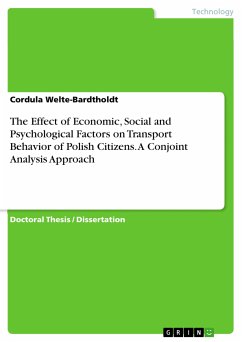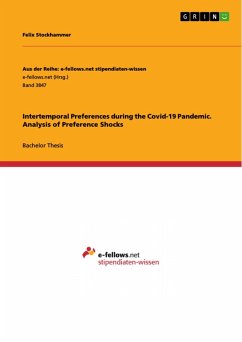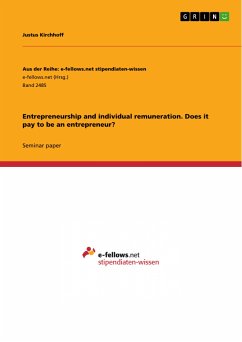Master's Thesis from the year 2020 in the subject Economics - Job market economics, grade: 2, University of Graz (Volkswirtschaftslehre), language: English, abstract: The thesis consists of two parts. The first part presents theoretical concepts of occupational mobility. The literature distinguishes between the horizontal re-sorting approach and the vertical one. In my opinion the vertical re-sorting approach reflects the real world more accurately. This approach allows for higher as well as for lower wage earnings of the workers after an occupational change. The second part contains an overview of occupational mobility rates, possible reasons for changing the occupation, and transitions matrices of occupational movements in other countries. However, the second part also looks at Austria: How does occupational mobility looks like in Austria? Do Austrian workers have preferences to move from one occupation to another? What are possible individual characteristics for the workers to undertake an occupational change? The thesis is structured as follows: Chapter 2 gives a literature review of publications mainly regarding occupational mobility but at some points, it also covers issues regarding jobs. Chapter 3 explains the concept of occupational movements. Chapter 4 gives an overview of theoretical concepts of occupational mobility. These concepts are grouped into two approaches, the horizontal and the vertical re-sorting approach. The horizontal re-sorting approach allows only movements upward the wage transition. Note that the wage transition explains changes of the received wages of the workers. In contrast, in the vertical re-sorting approach movements in both directions along the wage transition are possible. Chapter 5 summarizes the results about occupational mobility rates for some regions, such as Europe, Germany, France, the United States. The main purpose of chapter 6 is to discuss possible influences why a worker may undertake an occupational movement. Chapter 7 shows matrices that represent the occupational movements of the workers between occupation pairs. Chapter 8 presents my empirical analysis of the occupational mobility in Austria. Next, I investigate the occupational movements of the Austrian workers, in the understanding that an occupational movement is a concrete move from one occupation to a new occupation. After that, I perform an analysis of the influence of individual characteristics on an occupational movement, followed by an illustration of possible reasons why a currently employed worker would begin the search for another job.
Dieser Download kann aus rechtlichen Gründen nur mit Rechnungsadresse in A, B, BG, CY, CZ, D, DK, EW, E, FIN, F, GR, HR, H, IRL, I, LT, L, LR, M, NL, PL, P, R, S, SLO, SK ausgeliefert werden.









